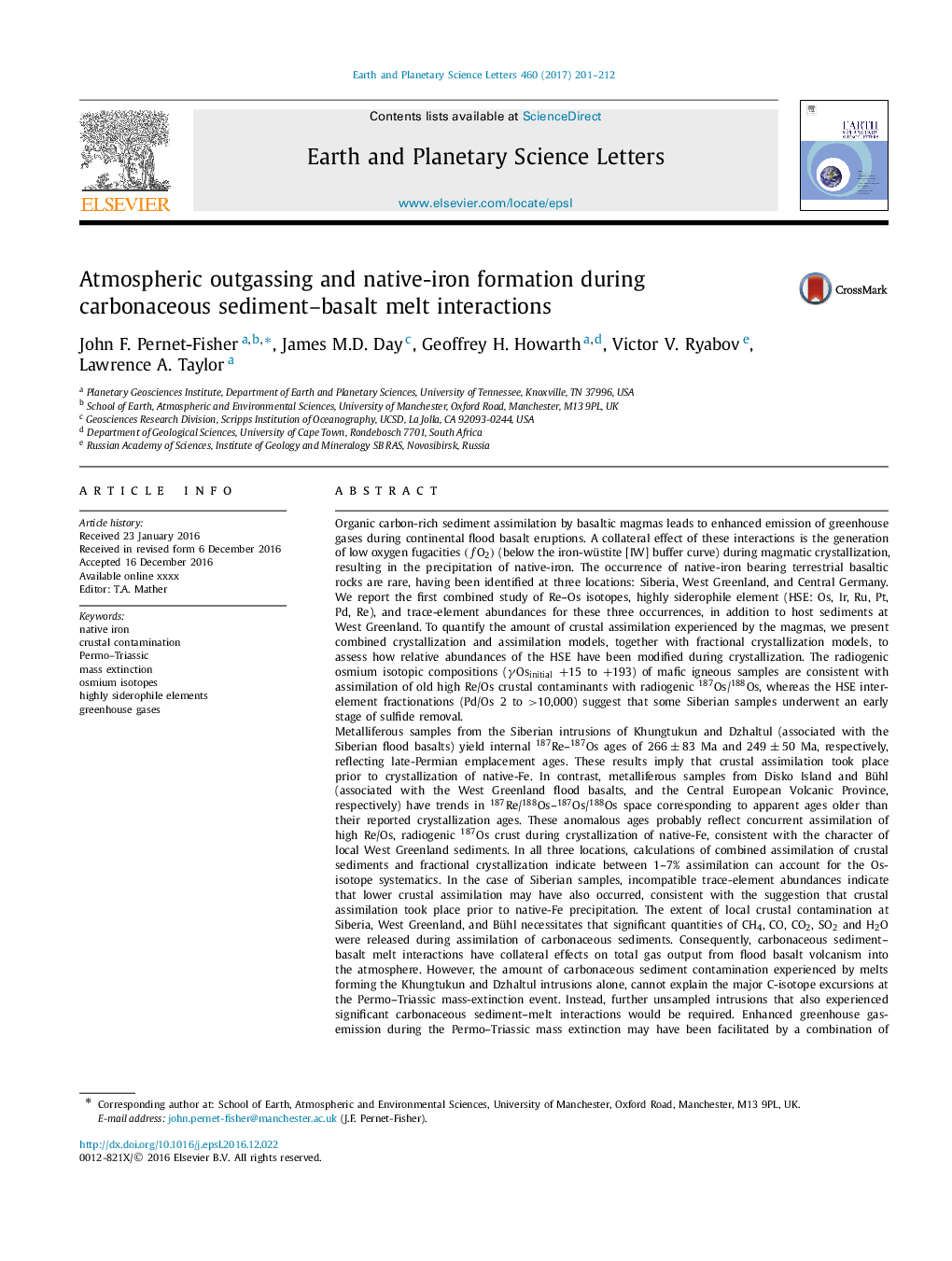| کد مقاله | کد نشریه | سال انتشار | مقاله انگلیسی | نسخه تمام متن |
|---|---|---|---|---|
| 5779890 | 1634696 | 2017 | 12 صفحه PDF | دانلود رایگان |
عنوان انگلیسی مقاله ISI
Atmospheric outgassing and native-iron formation during carbonaceous sediment-basalt melt interactions
ترجمه فارسی عنوان
بیرون زدگی از اتمسفر و شکل گیری آهن بومی در طی واکنش های ذوب رسوب-بازالت
دانلود مقاله + سفارش ترجمه
دانلود مقاله ISI انگلیسی
رایگان برای ایرانیان
کلمات کلیدی
موضوعات مرتبط
مهندسی و علوم پایه
علوم زمین و سیارات
علوم زمین و سیاره ای (عمومی)
چکیده انگلیسی
Metalliferous samples from the Siberian intrusions of Khungtukun and Dzhaltul (associated with the Siberian flood basalts) yield internal 187Re-187Os ages of 266±83Ma and 249±50Ma, respectively, reflecting late-Permian emplacement ages. These results imply that crustal assimilation took place prior to crystallization of native-Fe. In contrast, metalliferous samples from Disko Island and Bühl (associated with the West Greenland flood basalts, and the Central European Volcanic Province, respectively) have trends in 187Re/188Os-187Os/188Os space corresponding to apparent ages older than their reported crystallization ages. These anomalous ages probably reflect concurrent assimilation of high Re/Os, radiogenic 187Os crust during crystallization of native-Fe, consistent with the character of local West Greenland sediments. In all three locations, calculations of combined assimilation of crustal sediments and fractional crystallization indicate between 1-7% assimilation can account for the Os-isotope systematics. In the case of Siberian samples, incompatible trace-element abundances indicate that lower crustal assimilation may have also occurred, consistent with the suggestion that crustal assimilation took place prior to native-Fe precipitation. The extent of local crustal contamination at Siberia, West Greenland, and Bühl necessitates that significant quantities of CH4, CO, CO2, SO2 and H2O were released during assimilation of carbonaceous sediments. Consequently, carbonaceous sediment-basalt melt interactions have collateral effects on total gas output from flood basalt volcanism into the atmosphere. However, the amount of carbonaceous sediment contamination experienced by melts forming the Khungtukun and Dzhaltul intrusions alone, cannot explain the major C-isotope excursions at the Permo-Triassic mass-extinction event. Instead, further unsampled intrusions that also experienced significant carbonaceous sediment-melt interactions would be required. Enhanced greenhouse gas-emission during the Permo-Triassic mass extinction may have been facilitated by a combination of mantle melting and carbonaceous sediment-melt interactions, together with other proposed mechanisms, including wildfires, or by microbial metabolic exhalation.
ناشر
Database: Elsevier - ScienceDirect (ساینس دایرکت)
Journal: Earth and Planetary Science Letters - Volume 460, 15 February 2017, Pages 201-212
Journal: Earth and Planetary Science Letters - Volume 460, 15 February 2017, Pages 201-212
نویسندگان
John F. Pernet-Fisher, James M.D. Day, Geoffrey H. Howarth, Victor V. Ryabov, Lawrence A. Taylor,
